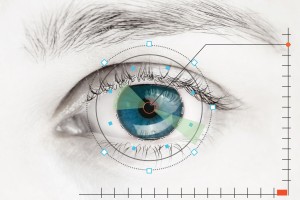Commonplace, but Still Relatively New — the History of LASIK
 It’s easy to assume that LASIK surgery has been around for a long time. The laser eye surgery is so commonplace — most everyone knows a person who has had the surgery. But in reality, LASIK has only been common in the U.S. for just over 20 years. Since we’re one of Chicago’s leading LASIK providers, we thought our patients might be interested to know some of the backgrounds of LASIK. Here’s a brief history of laser-assisted in situ keratomileuses (LASIK).
It’s easy to assume that LASIK surgery has been around for a long time. The laser eye surgery is so commonplace — most everyone knows a person who has had the surgery. But in reality, LASIK has only been common in the U.S. for just over 20 years. Since we’re one of Chicago’s leading LASIK providers, we thought our patients might be interested to know some of the backgrounds of LASIK. Here’s a brief history of laser-assisted in situ keratomileuses (LASIK).
What is LASIK?
Despite its actual long name (no wonder everyone uses the acronym!), LASIK is simply a reshaping of the cornea using a laser. Why does this vastly improve vision? When the cornea is either too flat or short that makes a person farsighted. When it is too long or curved too sharply, a person is nearsighted. And if the cornea is distorted or flattens unevenly, the person has astigmatism and focusing ability is flawed.
It all comes down to refraction. As light enters the lens of the eye, if the cornea isn’t the proper shape to refract the light correctly, then the person’s vision is less than perfect. LASIK reshapes these cornea problems to improve the vision of the patient. The targeted excimer laser beam gently removes, ablates (if you want to be technical), the corneal tissue to correct the refractive angles and allow the patient to see clearly. This is why LASIK is called “refractive surgery.”
It started in Columbia
Believe it or not, LASIK can trace its origins to South America. Yes, long before Columbia became synonymous with drug cartels and cocaine, it revolutionized vision care. In the 1950s in Bogota, Columbia, Spanish ophthalmologist Jose Barraquer was the first to test reshaping the cornea to improve vision. He developed the microkeratome, the blade that makes the cut in the outer cornea in LASIK procedures before the laser then reshapes the inner cornea (now we actually use a second laser, a femtosecond laser, to make the cut. Back in 1950, Barraquer also used the blade to reshape the cornea.
In 1980 at the IBM Research Laboratory, it was discovered that an ultraviolet excimer laser could etch living tissue without thermal damage to the surrounding area. As the 80s progressed several patents were issued for surgical lasers, the last in 1989 was to specifically modify corneal curvature.
LASIK was used in Europe and elsewhere before it was approved by the FDA in the U.S. Trials began in the U.S. in 1989. LASIK was then first approved by the FDA for standard use in 1992.
LASIK at Millennium Park
As one of Chicago’s leading LASIK centers, the Millennium Park Eye Center has given thousands of people the gift of perfect vision through LASIK surgery. Don’t you think it’s about time you ditched the contacts or glasses and woke up seeing with 20/20 vision? Give us a call and schedule your free LASIK consultation, 312-996-2020.
Category:


